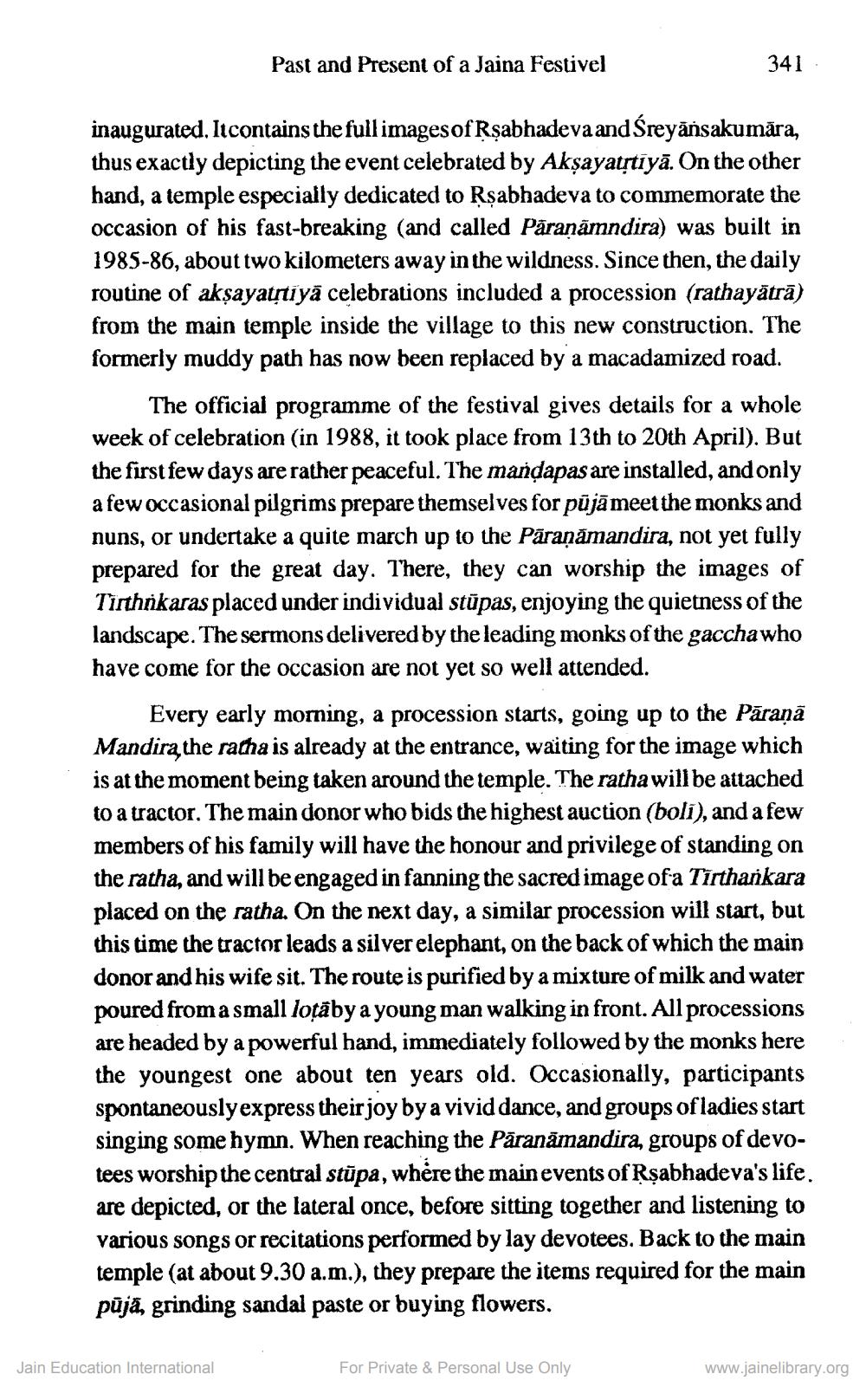________________
Past and Present of a Jaina Festivel
341
inaugurated. Itcontains the full images of Rşabhadeva and Sreyānsakumāra, thus exactly depicting the event celebrated by Akşayatrtiyā. On the other hand, a temple especially dedicated to Rşabhadeva to commemorate the occasion of his fast-breaking (and called Päranămndira) was built in 1985-86, about two kilometers away in the wildness. Since then, the daily routine of akşayatītiyā celebrations included a procession (rathayātrā) from the main temple inside the village to this new construction. The formerly muddy path has now been replaced by a macadamized road.
The official programme of the festival gives details for a whole week of celebration (in 1988, it took place from 13th to 20th April). But the first few days are rather peaceful. The mandapas are installed, and only a few occasional pilgrims prepare themselves for pūjāmeet the monks and nuns, or undertake a quite march up to the Pāraņāmandira, not yet fully prepared for the great day. There, they can worship the images of Tirthrikaras placed under individual stūpas, enjoying the quietness of the landscape. The sermons delivered by the leading monks of the gacchawho have come for the occasion are not yet so well attended.
Every early morning, a procession starts, going up to the Pāraņā Mandirą, the ratha is already at the entrance, waiting for the image which is at the moment being taken around the temple. The ratha will be attached to a tractor. The main donor who bids the highest auction (boli), and a few members of his family will have the honour and privilege of standing on the ratha, and will be engaged in fanning the sacred image ofa Tīrthankara placed on the ratha. On the next day, a similar procession will start, but this time the tractor leads a silver elephant, on the back of which the main donor and his wife sit. The route is purified by a mixture of milk and water poured from a small lotāby a young man walking in front. All processions are headed by a powerful hand, immediately followed by the monks here the youngest one about ten years old. Occasionally, participants spontaneously express their joy by a vivid dance, and groups of ladies start singing some hymn. When reaching the Pāranāmandira, groups of devotees worship the central stūpa, where the main events of Rşabhadeva's life are depicted, or the lateral once, before sitting together and listening to various songs or recitations performed by lay devotees. Back to the main temple (at about 9.30 a.m.), they prepare the items required for the main pūjā, grinding sandal paste or buying flowers.
Jain Education International
For Private & Personal Use Only
www.jainelibrary.org




